Light Sensitive "Music"
This Sound generator using 555 and LDR from www.buildcircuit.com is based on astable mode of 555 timer. This circuit demonstrates how resistance plays an important role in the output frequency of NE555 timer. When you change the resistance of the LDR you will hear the difference in output frequency.

Image derived from www.buildcircuit.com

Image derived from www.buildcircuit.com
Part List
- Breadboard—Jameco
- Wire—Jameco
- 2 coin cell batteries—Jameco
- Coin Cell Battery Holder—Adafruit
- 555 Timer—Jameco
- 8 Pin IC Socket—Jameco
- 8Ω Speaker—Jameco
- 2 .1UF capacitor—Jameco
- 100K Ohm Potentiometer —Jameco
- 1 LDR—Jameco
- 1KΩ Resistor—Jameco
- 330 Resistor—Jameco
- On/Off Switch—Jameco
- 1/2 Dual Mini Board with 213 Holes Protoboard—RadioShack
Instructions

Image derived from www.buildcircuit.com
- Breadboard the circuit first to test it.
- Connect power and gnd rails:
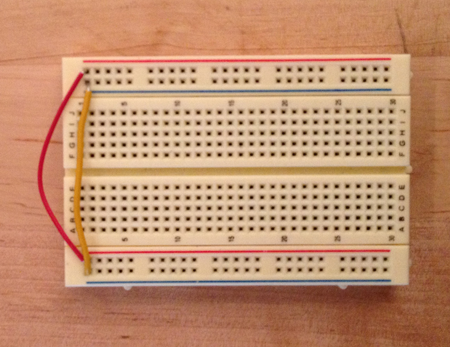
- Add the timer over the gutter:
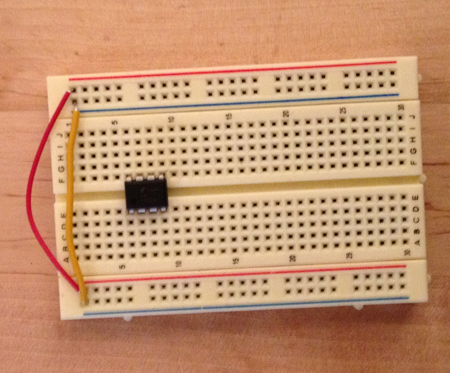
- Connect pins 4 and to power:

- Connect pin 1 to gnd:
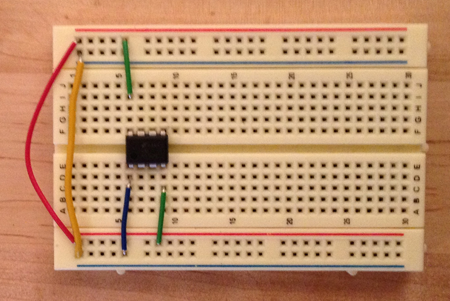
- Connect pin 7 to power through a 1K resistor:
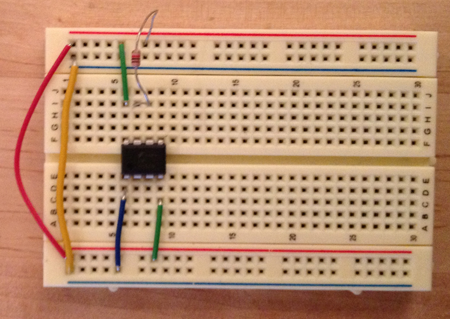
- Connect one end of the LDR to pin 7 and the other lead to a row on the breadboard:
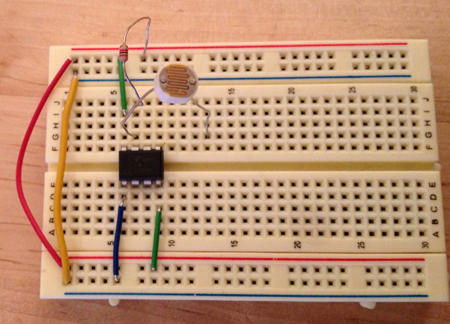
- Connect the right most lead of the potentiometer to pin 6 and the middle lead to the LDR:
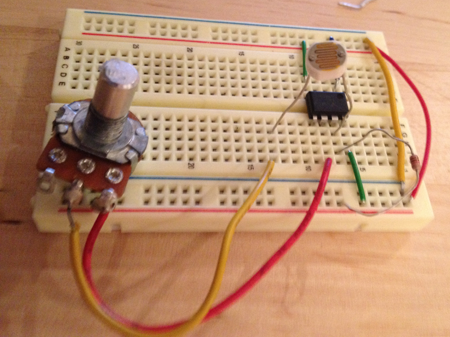
- Connect pin 5 to GND through a 0.1µF capacitor
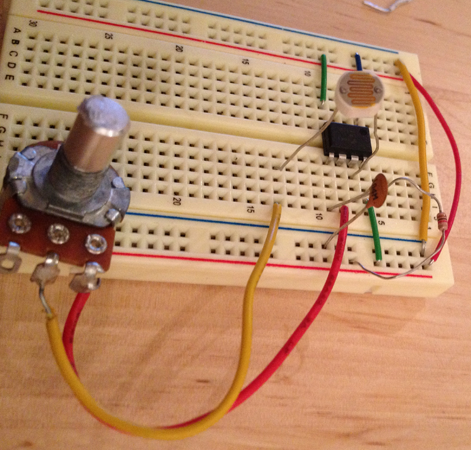
- Connect pin 2 to pin 6
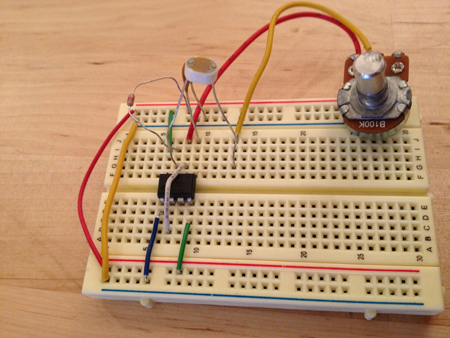
- Connect pin 2 to GND through a 0.1 µF capacitor:

- Connect the long lead of the 0.47 µF electrolytic capacitor to pin 3 and the short lead to a row on the breadboard:
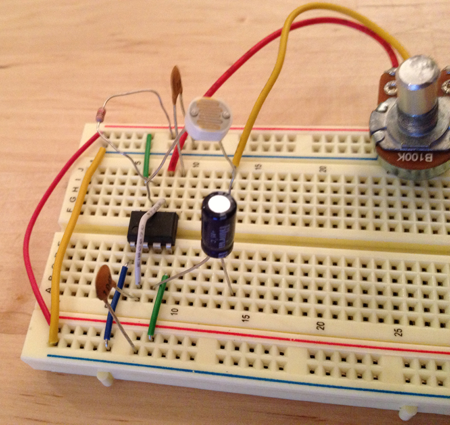
- Connect the positive lead of the speaker to the short lead of the electrolytic capacitor and the other lead to GND:
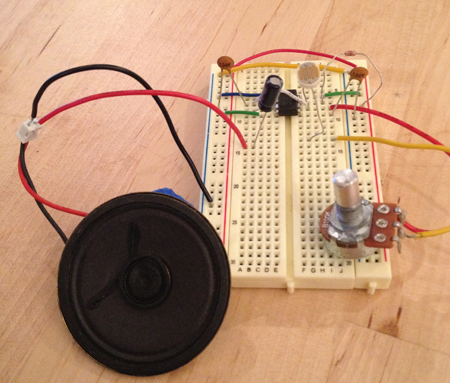
- Add a power supply and test:
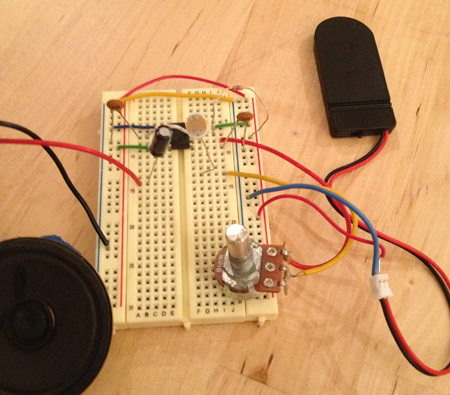
- Connect power and gnd rails:
- Freeform solder or use the protoboard to make your design more permanent
- Add the timer
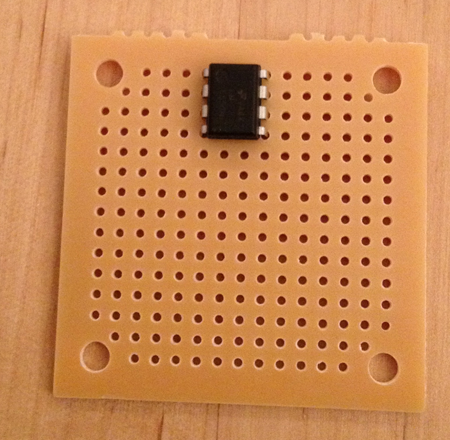
From the back:

- Add a wire to connect 4 and 8:
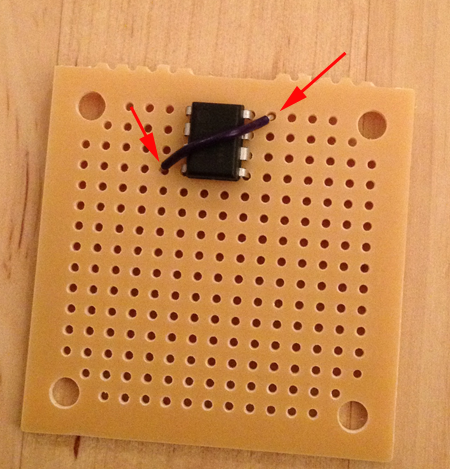
From the back:
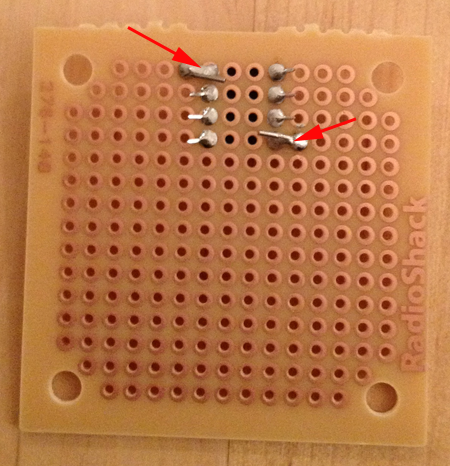
- Add a wire to connect 2 to 6:
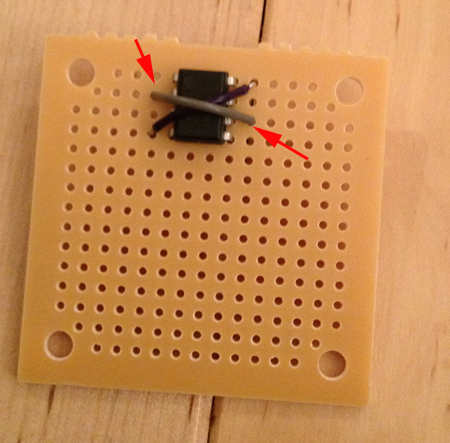
From the back:
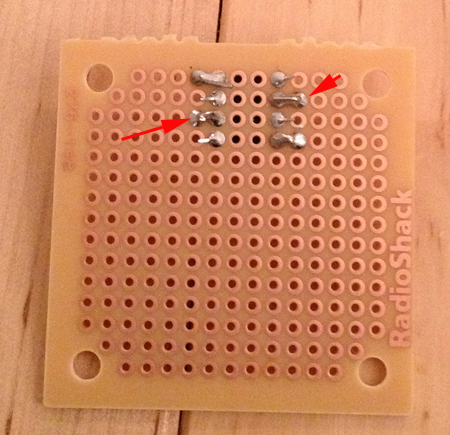
- Add connecting 1 to the other side of the chip. This will ultimately be connected to GND:
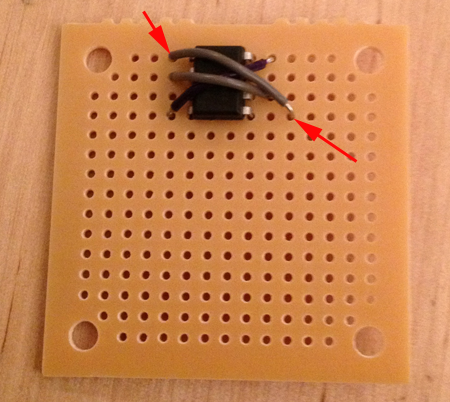
- Add the 1K and the LDR:
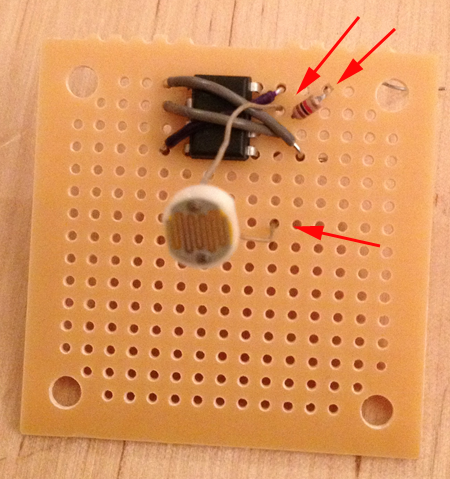
From the back:
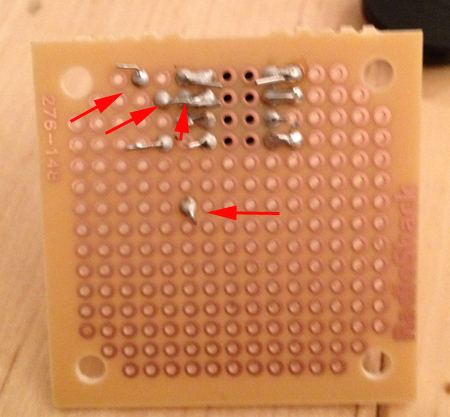
- Add the 0.1µF capacitor from 5:
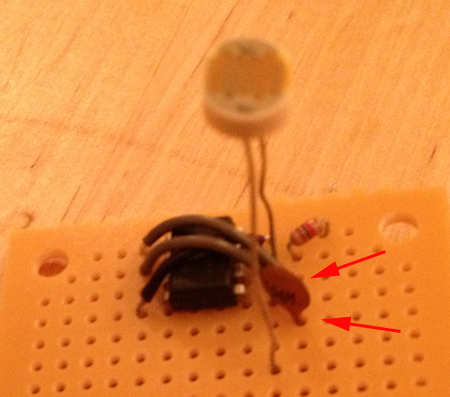
- Add the potentiometer from 6 to the other lead of the LDR:
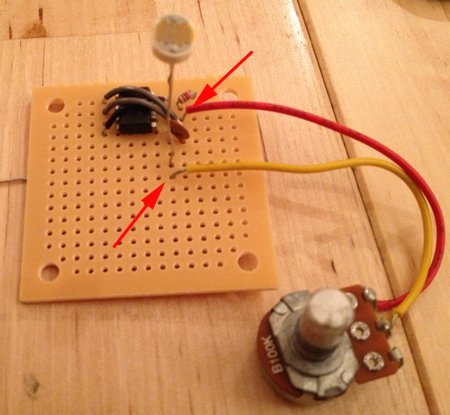
From the back:
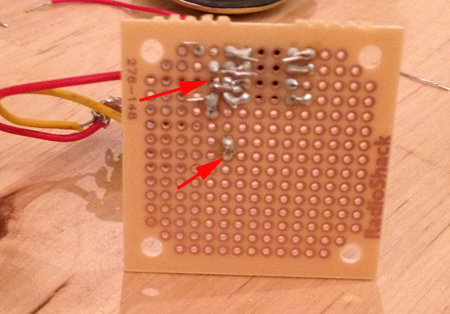
- Add the 0.1µF capacitor from 2:
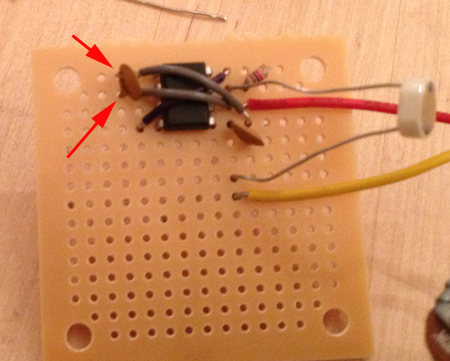
From the back:
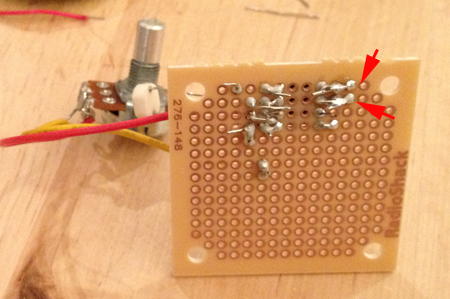
- Add the electrolytic capacitor from 3:
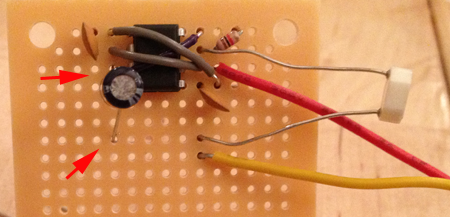
From the back:
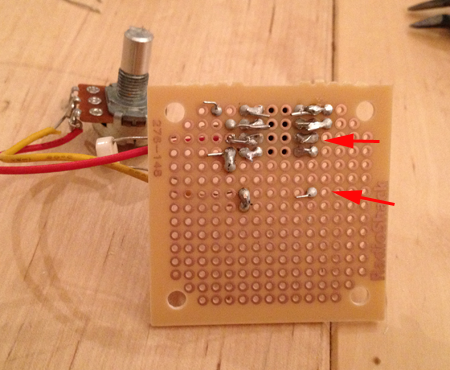
- Add the speaker (the positive side connects to the short lead of the capacitor. The other lead will go to GND:
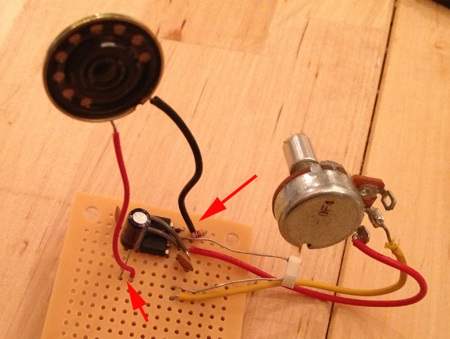
From the back:
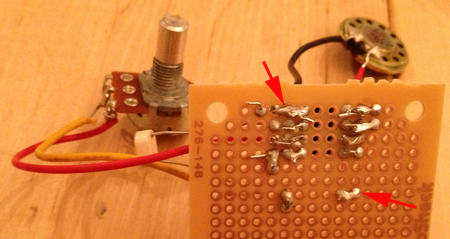
- Add your power supply:
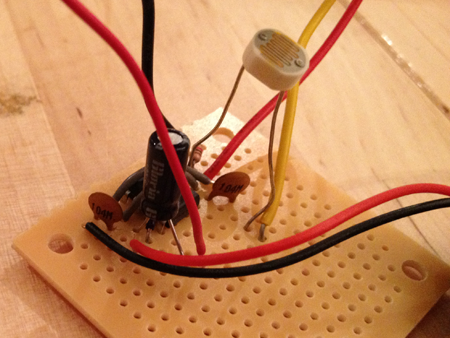
From the back:
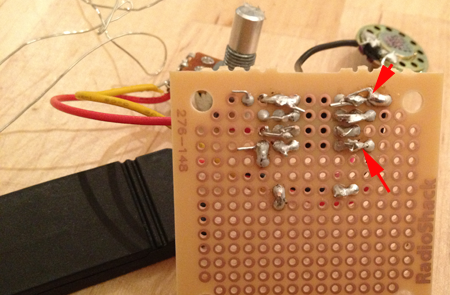
- Add a jumper so that the other end of the 1K resistor goes to power:

From the back:
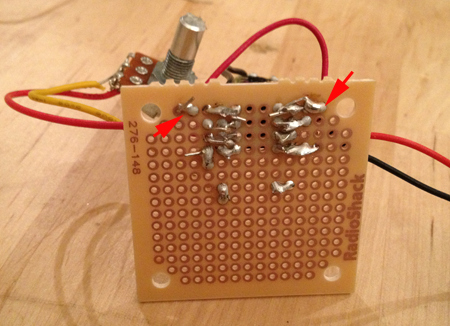
- Bend your circuit into shape:

- Add the timer
- Use a digital caliper to measure your components. Write down the dimensions.
- Think about how people play instruments. Follow the steps of the design process, then design the housing that reflects your thought process.
Basic steps of the Design Process
The Design Process requires- Describe the general situation or problem you are trying to solve. Instead of asking what do you want to design? ask why do you want to design that? and what problem and or need will your design ultimately be solving?
- Identify your target audience, the group that will benefit from your project. Is the target population an individual, a group, a specific community, or a larger, identifiable population? Is the target population from a specific location (country, region, town), demographic (age or gender), or other identifying characteristics (health condition or employment)? Think about how is your target population connected?
-
Identify the requirements and constraints. A requirement is a need or a necessity; it's what a particular product or service should do. A constraint is a restriction on the degree of freedom you have in providing a solution to a need or problem.
- Ask what would make this fun to play?
- Ask what compromises need to be made when you design?
- Determine if the compromises are absolutely necessary?
- Determine if your solution can be improved?
- By taking a new approach.
- By making the design more accurate.
- By making the design more safe.
- By making the design more convenient.
- By making the design easier to maintain.
- By making the design cheaper to produce.
- By making the design more attractive.
- Determine if you can reduce the costs by eliminating parts, using different materials, changing the way the product is manufactured?
In a nutshell
- Design Step 1: Identify the Need
- Design Step 2: Research the Problem
- Design Step 3: Brainstorm Possible Solutions
- Design Step 4: Engineering Analysis-select the most promising solution
- Design Step 5: Construct a Prototype
- Design Step 6: Evaluate/Manufacture a Final Product-Reiterate
Getting Started
Keep a notebook to keep track of your questions and answers. The design process will help inform your choices and should be an integral part of your creative process.-
Research existing solutions. What aspects of the design appeal to you, why?
- Research how people hold things, and how they play instruments. Make sure you know more about this problem than what is provided here on this web page.
- What are your constraints? Make a list.
- Observe how people make music, when, where, and with whom?
- Make sketches. Draw a top view, a side view, an isometric view and include dimensions. Your drawings are your blueprints. Someone else should be able to use your drawings to build an identical model.
